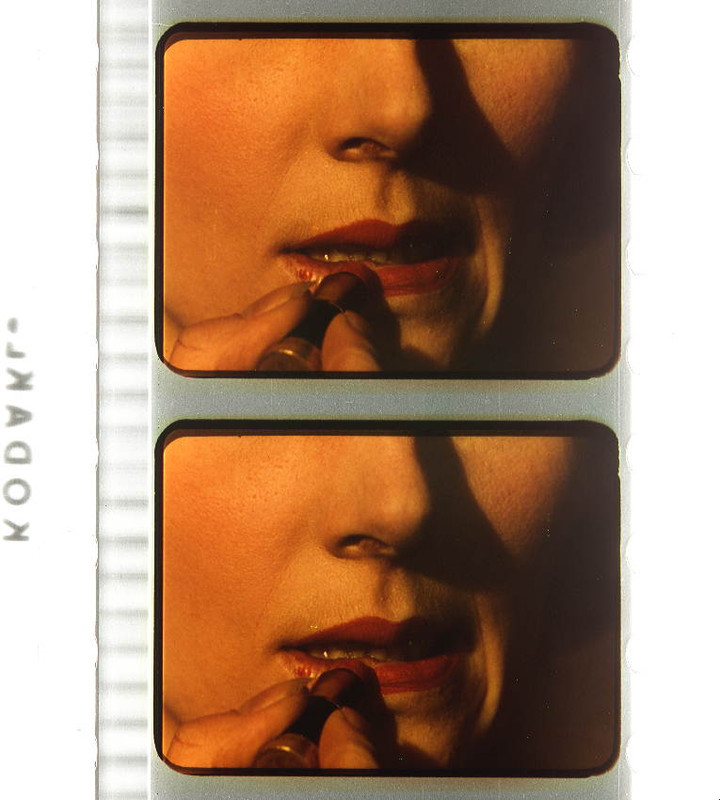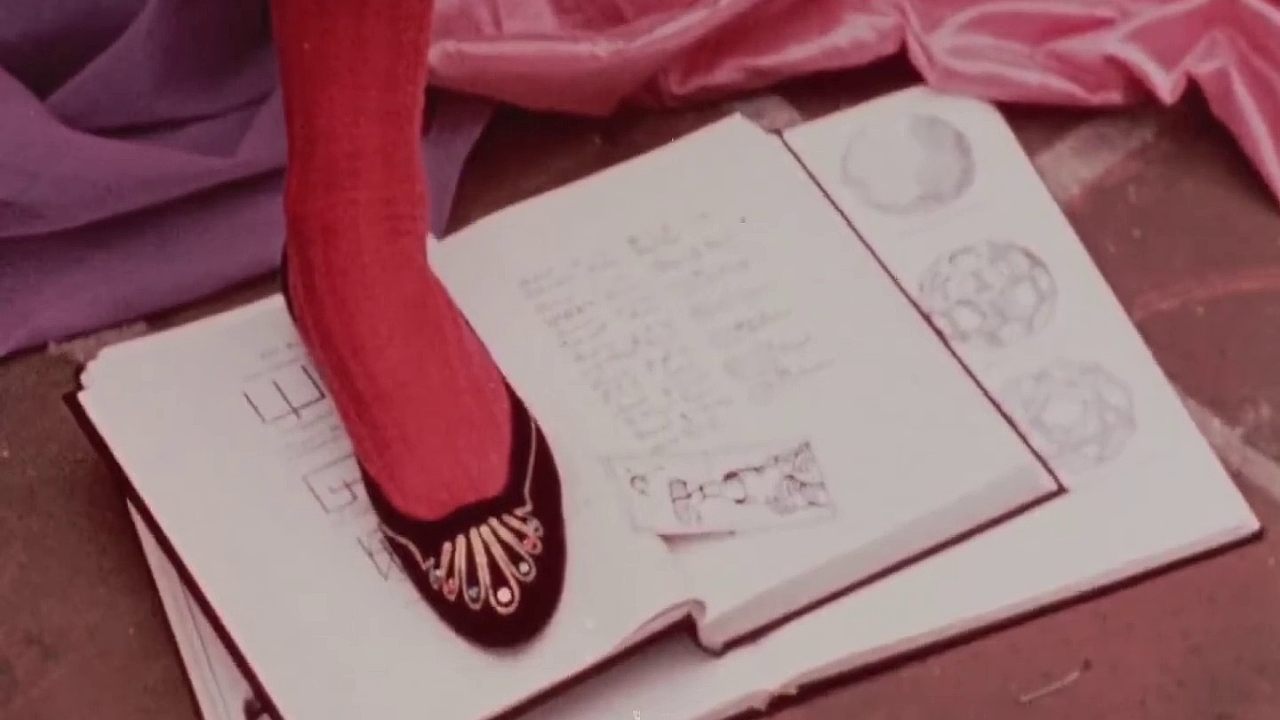“Do you think it's a good thing to let her feel important?”Black Narcissus (Michael Powell + Emeric Pressburger, 1947)
Jul
29
National Lipstick Day
spoiler warning: click to toggle image

spoiler warning: click to toggle caption
In one of the film's most haunting scenes, Sister Clodagh (Deborah Kerr) transforms herself using lipstick (via). DP: Jack Cardiff.
High up in the Himalayas, Christian nuns attempt to found a school and hospital in a Raja's former palace. The palace, decorated with ancient erotic murals and run by the attractive Englishman Mr Dean, becomes an increasingly impossible to resist source of secular lust for the chaste Sisters.
– Sister Clodagh
With Jack Cardiff's sweeping cinematography and #Technicolor splendour, Black Narcissus establishes a stark contrast between the Sisters dour piety, the luminance of the Himalayan landscape, and the spellbinding pull of worldly desire. The bewitching #lipstick scene, set in a dimly lit space, works as well as it does precisely because of the scene's photography. That red smear, like blood pulsating from a fresh wound, becomes a deeply unsettling, vulgar gesture.
colours
“You say to the boy 'Open your eyes'. When he opens his eyes and sees the light, you make him cry out, saying 'Oh, Blue, come forth! Oh, Blue, arise! Oh, Blue, ascend! Oh, Blue, come in!'.”Blue (Derek Jarman, 1993)
Jul
13
Oxymoron Day

Not a screenshot from the film, but a pure representation of International Klein Blue.
Synchronous to the screening of a film that wasn't, Derek Jarman's Blue was broadcast on radio and television. Those who tuned into the radio could request a special card printed in that most spectral of colours, International Klein Blue, a blue that according to its creator Yves Klein, has “a quality close to pure space” and “immaterial values beyond what can be seen or touched”.
– Nigel Terry
Submerged in #blue, seeing through what was left of Jarman's eyes, we live through the artist's life, and love, and loss. When you leave the theatre, put down that card, you're temporarily blinded by the physiological afterimage of a devastating disease. What remains is the voice of a filmmaker who lost his sight.
“Purple beyond purple: it is the light higher than eyesight”Inauguration of the Pleasure Dome (Kenneth Anger, 1954) & The Wormwood Star (Curtis Harrington, 1956)
Mar
26
Purple Day


1: The Scarlet Woman (Marjorie Cameron) wearing a fantastic peacock-like robe and crown. DP: Kenneth Anger.
2: Cameron as herself. Here too she wears references to the peacock Aiwass, who dictated The Book of the Law to Crowley.
Someone wears purple on Purple Day (International Epilepsy Day).
Both in The Wormwood Star (Curtis Harrington, 1956) and Inauguration of the Pleasure Dome (Kenneth Anger, 1954), Marjorie Cameron wears shades of purple. Professionally known as Cameron, she was a follower of #Thelema, the philosophical movement founded by occultist Aleister Crowley.
– Aleister Crowley, Liber AL vel Legis sub figura CCXX (1904)
Meanwhile in 1946, rocket scientist #JackParsons and (pre-Scientology) sci-fi author #LRonHubbard worked on a series of Crowley-related Magick ceremonies named Babalon Working. After Parsons declared the rituals a success, he encountered Cameron in his own house. She became the element required to continue the ceremonies, this resulting in her being declared Babalon, the Scarlet Woman.
“The other day I got caught in some fishermen's net. Of course, I had to drown them. I couldn't allow them to touch me, could I?”Malá morská víla [The Little Mermaid] (Karel Kachyňa, 1976)
Mar
3
National Dress In Blue Day

The little mermaid (Miroslava Safránková) in her wonderful sea-blue dress, puts a coral-red rose in her blue hair. DP: Jaroslav Kučera.
Miroslava Safránková plays Hans Christian Andersen's doomed little mermaid – Malá morská víla in Czech – who falls in love with a mortal and gives up her beautiful voice to be with him. Sadly, the mortal, a prince, doesn't recognize his mute saviour and doesn't return his love.
– the little mermaid
The wonderful soundtrack is by Zdeněk Liška who also composed music for Ikarie XB 1 (Jindřich Polák, 1963) and Spalovač mrtvol (Juraj Herz, 1969).